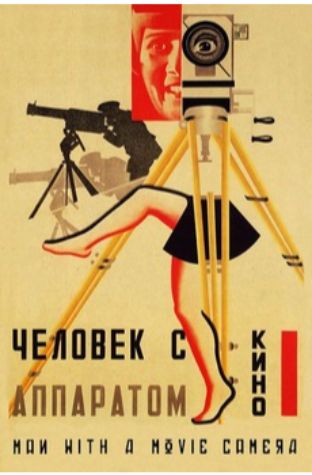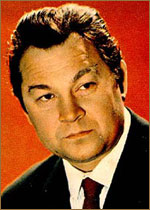
Kino-Eye forged a film and newsreel collective that sought the dismantling of bourgeois notions of artistry above the needs of the people. The collectivization of filmmaking was central to the programmatic realization of the Communist state. Films that focused on individuals rather than masses were deemed counterrevolutionary, but not exclusively so. The production of films-how and under what conditions they are made-was of crucial importance to Soviet leadership and filmmakers. A semiotic understanding of film, for example, is indebted to and in contrast with Sergei Eisenstein's wanton transposition of language "in ways that are altogether new." While several Soviet filmmakers, such as Lev Kuleshov, Dziga Vertov, Esfir Shub and Vsevolod Pudovkin put forth explanations of what constitutes the montage effect, Eisenstein's view that "montage is an idea that arises from the collision of independent shots" wherein "each sequential element is perceived not next to the other, but on top of the other" has become most widely accepted. Post-Soviet film theories relied extensively on montage's redirection of film analysis toward language, a literal grammar of film. In fact, montage is demonstrated in the majority of narrative fiction films available today. Alfred Hitchcock cites editing (and montage indirectly) as the lynchpin of worthwhile filmmaking. Its influence is far reaching commercially, academically, and politically. It is the principal contribution of Soviet film theorists to global cinema, and brought formalism to bear on filmmaking.Īlthough Soviet filmmakers in the 1920s disagreed about how exactly to view montage, Sergei Eisenstein marked a note of accord in "A Dialectic Approach to Film Form" when he noted that montage is "the nerve of cinema", and that "to determine the nature of montage is to solve the specific problem of cinema". Soviet montage theory is an approach to understanding and creating cinema that relies heavily upon editing ( montage is French for 'assembly' or 'editing'). Citizen Kane, Rocky, Scarface and Commando all use montages, if in a slightly less intensive form than its Russian creators intended.Sergei Eisenstein (left) and Vsevolod Pudovkin (right), two of the best-known Soviet film theorists This technique changed the way film integrated time and space and evolved into the ‘montage’ we know today and that is seen so much throughout cinema history. The hero here was ‘the people’ and many of the film’s leading characters weren’t given names in an aim to unify the main players. As such his films rarely focused on one protagonist alone.

This jarring style was also used as a medium through which to ‘educate’ the working classes. Sergei Eisenstein’s work ( Battleship Potemkin, most famously) was inspired by Kuleshov and refused to spoonfeed audiences, cutting between random imagery to make viewers decipher an idea or feeling. It was a new style of editing that spurned capitalism by going against the smooth, romantic editing prolific at the time and generally stirred up the creative juices of directors everywhere. The director intercut shots of faces with related images to generate an emotional response in his spectators. It all kicked off when Russian director-cum-theorist Lev Kuleshov realised that an actor’s expression wasn’t enough to convey a specific idea, therefore juxtaposed images must.

What is it? Even if you’ve never seen a 1920s Russian film (what have you been doing with your life?), you’ll still have noticed one of the most recognisable editing techniques in film history: the montage.


Key filmmakers: Sergei Eisenstein, Lev Kuleshov


 0 kommentar(er)
0 kommentar(er)
